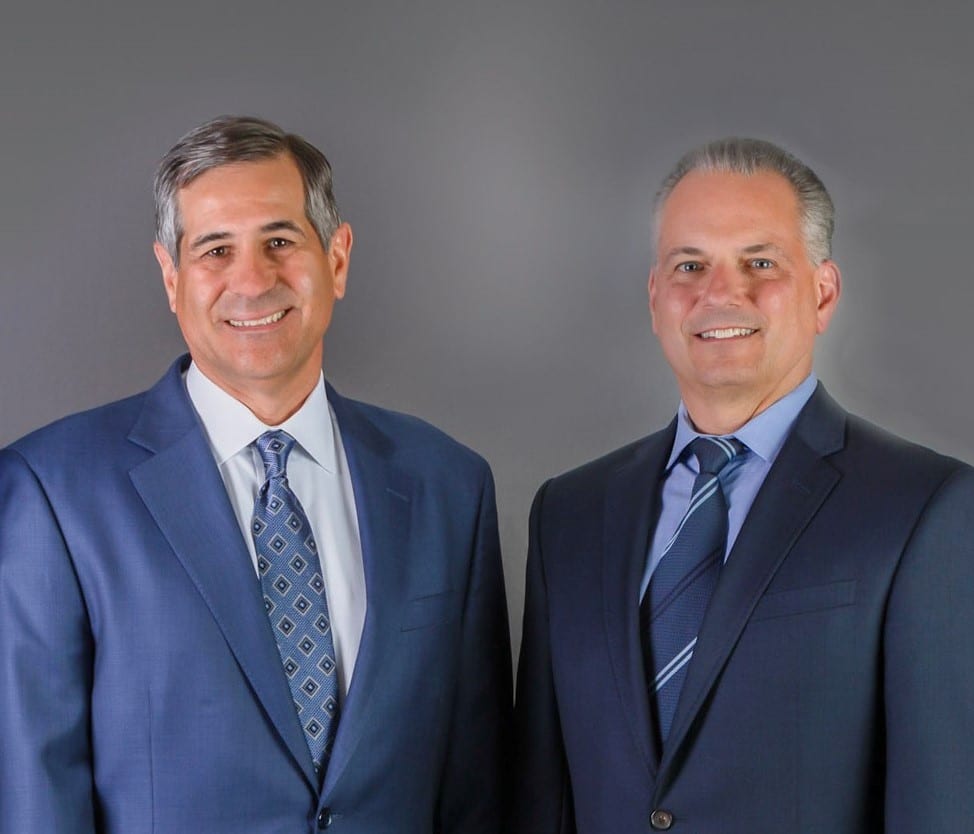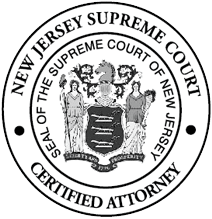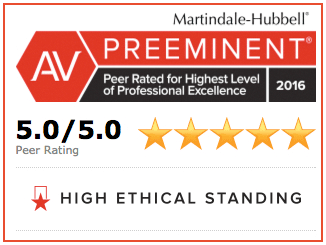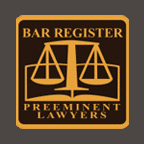Injury On the Golf Course: Regardless of Your Handicap, Escaping Liability Is Par for the Course
Read more about golf course accidents and injuries in this paper written by Louis J. DeVoto.
The University of Toledo Law Review
Volume 24; Summer 1993; Number 4
“Injury On the Golf Course: Regardless of Your Handicap, Escaping Liability Is Par for the Course”
Louis J. DeVoto*
I. INTRODUCTION
“Golf is one of the more popular pastimes in this country.” The popularity of the sport has increased tremendously in recent years and now thousands of people are having golf lessons in los angeles as well as other cities. As play on the golf course has increased, so have golf-related injuries. Golfers know that “poor shots end in sand-traps, roughs and higher handicaps.”
But, most golfers and many lawyers do not realize that stray shots can also end in serious injuries. And, large lawsuits.
Golf-related injuries result from errant shots, reckless swings, overturned golf carts and thrown clubs. Few people associated with golf courses are immune from the hazards of the golfing accident-players. In addition to caddies, spectators, passing motorists and even adjacent homeowners. With insurance becoming increasingly expensive or largely unavailable, “the legal implications of such accidents are vitally important to golfers, golf courses and insurers.”
Aims of the Article
This article will discuss theories of liability available to injured plaintiffs. Conversely, this article will discuss the defenses most commonly relied upon to refute liability in golf and golf related accidents. Furthermore, this article will focus on liability and defense theories. Of course, with respect to the following three types of golf-related injuries; injuries sustained from errant golf balls, golf club injuries and injuries arising out of golf cart use.
After discussing court holdings for the most frequent accidents encountered on or near a golf course, this article will analyze some unusual fact situations. The aim is to determine whether public policy allows certain classes of plaintiffs to escape the general rules applicable to golf course liability. Finally, this article will explain why certain golf-related injuries violate society’s notion of fairness. And, it will suggest several ways to alleviate the harsh results arising from injuries on or near a golf course.
II. GOLFERS HIT BY ERRANT GOLF BALLS
A. Negligence of Golfer Striking Ball
The most common golf course injuries are those that involve players. Case law suggests that injured plaintiffs often sue to recover for injuries. That is when an errant golf ball hit the eye of the plaintiff. Negligence principles usually govern a civil action brought by an injured golfer. Actionable negligence may arise from an omission or commission of an act. That is if a reasonable person could foresee that the act or omission might cause injury to another. “This principle is often applied where the negligence is predicated on a voluntary undertaking.”
In a situation where an errant golf ball struck a person, the general rule is that the golfer hitting the ball is under a duty to exercise ordinary care; for the safety of persons reasonably within the zone of danger of being where the ball can strike them.
Ordinary care places a duty on the golfer about to strike a golf ball to timely and adequately warn persons; “within the foreseeable ambit of danger” the ball may strike them. That is if those persons are unaware the golfer intends to hit his ball. And, the golfer knows or should know of their unawareness.
Fore
Regardless of the duty to warn prior to striking the ball, a duty to warn others in the vicinity exists after striking the ball if it becomes apparent that the shot is errant. The customary warning given by golfers in this situation is to yell “fore!” However, this duty generally does not extend to players outside the line of play. This is because the danger to them cannot be reasonably anticipated. Additionally, there is no duty to give a warning; when another player “is not in or near the intended line of flight or when the other player is aware of the imminence of the intended shot.”
In applying these general standards, courts have noted that the failure to hit the ball in the intended direction does not alone establish negligence. For example, an audible warning is unnecessary when the person injured is in a reasonably safe place. And, is aware of the player’s intention to play the ball. Courts have generally found that no liability exists for failing to warn in these situations. This is because the warning would be superfluous. Thus, when a plaintiff and defendant are part of the same golfing party, a warning will generally be unnecessary; since the injured plaintiff knows or should know that the defendant golfer is about to strike the ball. Moreover, a golfer generally has no duty to warn players on different holes. That is if they are not in the intended zone of danger.
Cavin v. Kasser Case
In Cavin v. Kasser, the plaintiff was waiting to tee off on the number two hole of Creve Coeur Golf Club. Meanwhile, the defendant, Kasser, was preparing to hit from the number three tee. The two holes “were parallel to each other and played in opposite directions.”
Additionally, the distance between the two tees was approximately 156 yards. Each tee was visible from the other despite the fact that trees separated them. The plaintiff heard the defendant shout “fore” after striking the ball. But, was unable to move to protect himself before being hit. The defendant’s errant shot struck the plaintiff in the left cheek. The plaintiff required an operation. And, as a result, plaintiff still has constant ringing in his ears. In addition to insomnia and stiffness in his shoulder.
Nonetheless, the court granted summary judgment in favor of the defendant golfer; holding that Kasser had no duty to warn before the shot because the plaintiff was on a different hole. Further, the defendant gave an appropriate warning when it became apparent his shot was errant.
Zone of Danger?
However, a greater duty to warn may develop for golfers playing different holes. This is when the injured plaintiff is unaware of the defendant’s pending shot. And, the defendant sees the plaintiff before striking the ball. This is especially true where the defendant golfer knows of his propensity to shank his golf shot. Additionally, since the zone of danger creates the duty to warn, recovery against a golfer for injuries obtained as a result of being hit by an errant golf shot hinges on how the court defines the zone of danger. Courts traditionally construed the zone of danger narrowly; defining it by the intended flight of the golf ball. However, in the recent decision of Bartlett v. Chebuhar, the court broadened the zone of danger, not limiting the zone to the intended flight of the ball.
Bartlett v. Chebuhar Case
In Bartlett, the two parties, Larry Bartlett and Martin Chebuhar, were playing golf at the Washington Golf and Country Club. The two men were playing different holes. And, because of a couple bad shots by the defendant Chebuhar, the two golfers wound up on adjacent fairways. When Chebuhar was lining up to take his third shot, he saw that other golfers were at an angle to his right. On the number three green. Chebuhar, however, was hitting left toward the number nine green. And, he saw no individuals standing in the intended path of the ball. Chebuhar sliced his third shot. The ball traveled away from the intended flight and directly toward the number three green that Bartlett was playing.
Chebuhar testified that “he yelled ‘fore’ after striking the ball.”
The ball hit an embankment in front of the third green. Then, it ricocheted up and hit Larry Bartlett in the eye causing serious injury. Bartlett brought an action in negligence against Chebuhar. The district court found that the defendant’s actions did not constitute negligence. This is because the plaintiff was not in the intended flight of the defendant’s ball. The Iowa Supreme Court reversed the district court. And, held that the zone of danger may include someone standing at a point fifty degrees from the intended line of flight; where it was foreseeable to the golfer hitting the ball that the ball could travel in that direction. In applying the zone of danger test, the Bartlett court stated that analyzing the facts will best determine the zone of danger. And, the circumstances of each individual case.
In conclusion
Thus, the Bartlett court has created a subjective standard that fluctuates with the skill and knowledge of the golfer. The “intended flight of the ball” test enunciated in Jenks allowed defendant golfers to escape liability; based on their intention to hit an accurate shot. The Bartlett test correctly takes into account the golfer’s knowledge of his own skill. And, ability in determining whether the golfer needs to warn others of his intention to hit. Thus, under Bartlett, poor golfers will often have a greater duty to warn.
Thompson v. McNeill Case
Ohio, however, has created a standard of care. It requires less care than Jenks. Which is making it even more difficult for plaintiffs to recover for injuries incurred by errant golf balls. In Thompson v. McNeill, the Supreme Court of Ohio held that negligent conduct of a golfer could not result in liability. In Ohio, an injured person may only recover for injuries sustained by errant golf balls. This is only when the golfer’s conduct is intentional. Or, in reckless indifference to the rights of others.
For example, in the majority of jurisdictions, golfers may be found negligent. This is true if they know another person is in the intended flight of the ball. Or, if they fail to offer the customary warning of “fore,”.
And, as a result, strike the plaintiff with the golf ball. However, in Ohio, liability would accrue only if the conduct amounts to recklessness. Or, intentional conduct. Thus, in Ohio, an inadequate result is reached. Because, the golfer will rarely if ever, be accountable for mishit golf balls that seriously injure others.
Assuming a Risk
Recovery for injuries sustained when a person is struck by a golf ball is often barred. This is because the plaintiff assumes risk of obvious and foreseeable injury ordinarily incident to the game of golf. Assumption of the risk may be express or implied. Most often, implied assumption of risk applies between golfers involved in a golfing accident. Under the implied form of assumption of risk, the plaintiff’s willingness to assume a known risk is determined from the conduct of the parties rather than from an explicit agreement.
Volenti Non Fit Injuria
For the doctrine of assumption of risk to apply, the defendant must show that the three elements are present. These are (1) risk of harm to the plaintiff caused by the defendant’s conduct; (2) the plaintiff has actual knowledge of the particular risk and appreciates its magnitude; and (3) the plaintiff voluntarily chooses to enter or remain within the area of the risk under circumstances that manifest his willingness to accept that particular risk. Although golfers are generally held to assume known risks, they do not “assume the extraordinary risk of an unforeseen act of negligence.”
Thus, while a golfer assumes the risk that a ball may be hit to the right or left, he does not assume the additional risk; another player will hit a ball without a proper warning. As a result, many courts have held that an injured plaintiff cannot recover when hit by an errant golf ball. This is because he assumed the risk. Unless the defendant’s conduct was negligent.
Some courts have used the maxim “Volenti Non Fit Injuria,” “that to which a person assents is not esteemed in law and injury,” to refer to the plaintiff’s assumption of the risk. The principle underlying the maxim is the same as assumption of the risk. The difference is that the maxim applies independently of any contractual relations between the plaintiff and defendant. However, courts have generally used the terms synonymously to refer to one who knowingly comprehends the danger. And, voluntarily exposes himself to the risk.
Negligence
The defendant may also raise the defense of contributory negligence against an injured plaintiff. When successful, depending on the jurisdiction in which the defense is raised, contributory negligence may act as either a total bar to the plaintiff’s recovery. Or, a reduction in defendant’s liability toward the plaintiff. Since the majority of states have adopted some form of comparative fault, contributory negligence is generally less attractive. In comparison to the assumption of risk defense, which always acts as a complete bar to the plaintiff’s recovery. However, the assumption of the risk defense is not applicable in actions involving negligent conduct by a defendant golfer. Thus, as a practical matter, where a defendant golfer is partly negligent, contributory negligence is a better defense.
B. Negligence of Golf Course Owner
One alternative for the injured golfer is to look to the course owner for recovery. It is important to determine whether the golf course is privately or publicly owned. If the municipality owns the course, courts generally hold that the governmental entity is immune from liability for ordinary negligence. The statute governs most cases. And, liability will be predicated on whether the golf course is listed as public property for government immunity purposes.
The owner or operator of a private golf course may be held liable for injuries to a person struck by a golf ball. That is if the owner or operator failed to exercise ordinary care in maintaining the course in a reasonably safe condition. Liability for such failure to exercise ordinary care may be predicated on the way in which the course is designed. Or, the condition of the grounds or the manner in which the course is being operated.
Giving a Warning
A golf course owner has a duty to exercise ordinary care in promulgating reasonable rules for the protection of those who rightfully use the course. And, to exercise ordinary care in seeing that the rules are enforced. However, because golfers are expected to give warnings, the owner cannot be held liable for injuries sustained when no warning was given. This is unless the owner knew or should have known that a golfer would drive a ball in violation of the common rules.
Additionally, most jurisdictions hold that the owner of a golf course is not an insurer of the safety of its patrons. And, is only liable for injuries received through his negligent conduct. It is equally well settled among the vast majority of courts that one who participates in sports assumes the ordinary risk attendant upon participation. Therefore, the liability issue with respect to golf course owners is not whether it was foreseeable to the owner that golfers would hit erratic shots. But, whether the condition of the course operated by the defendant unreasonably subjected a plaintiff to dangers. And, hazards over and above those commonly inherent in golf.
Baker v. Thibodaux Case
For example, in Baker v. Thibodaux, the plaintiff claimed that the golf course had been negligently designed. And, the owner failed to warn the plaintiff of any defect in the course. Plaintiff and defendant were not playing in the same foursome.
At the time of the accident, the plaintiff was on the fifteenth hole, and the defendant was on the sixteenth. The holes were parallel and contiguous. The defendant golfer yelled “fore” after his shot hooked left, but the plaintiff could not avoid being hit. The trial court found in favor of the defendant course owner holding that (1) the golf course was reasonably safe; (2) the risk of being hit by an erratic shot was an ordinary risk of the game rather than a hidden peril requiring a specific warning by the owner; and (3) the owner was justified in relying on the golfer’s duty to warn.
Since the course owner can raise the defenses of assumption of risk and contributory negligence, many actions initiated against the golf course owner for failure to warn are resolved on summary judgment in favor of the owner where the facts are not in dispute.
Cornell v. Langland Case
Although golf course owners are rarely liable for a golfer’s failure to warn, they are more often liable for injuries that the golf course proximately caused. In Cornell v. Langland, the Appellate Court of Illinois found a course owner negligent for failing to correct the yardage indicated on the score card. In Langland, the defendant golfer approached the eighth tee. Then, he looked at the score card to ascertain the distance from the tee to the green. The score card showed the yardage as 315 yards from tee to green. Defendant Langland waited until the players in front of him reached the green. Relying on the distance indicated on the score card, he proceeded to tee off. His drive struck the head of the plaintiff causing severe injury.
The injured plaintiff brought suit against the golf course owner for negligent failure to correct the yardage indicated on the score card and against the player for negligent failure to warn. At trial, evidence proved that the distance from the tee to the green was only 232 yards and that the course owner was aware that the score card indicated the wrong yardage but decided not to change it. The plaintiff voluntarily dismissed the defendant golfer, but the court found the course owner liable for negligence in failing to represent the true yardage on the score card since he knew or should have known that golfers would rely on the yardage indicated in determining whether it was safe to hit the ball.
C. Negligence of Golf Course Designer and Builder
In certain situations, a court may find that the course was designed improperly, and as a result, it was foreseeable that players would be at a much greater risk than anticipated. Generally, a golfer must show that the course was negligently designed or contained hidden dangers. In Klatt v. Thomas, the Supreme Court of Utah reversed a summary judgment in favor of the designers and builders of a golf course. This was after finding material facts in dispute about the possible negligence in the design and construction of the course. In Klatt, a golf ball struck the defendant golfer as he stood at the fourteenth tee.
According to the plaintiff, golfers standing at the fourteenth and fifteenth tees nearly face each other but are slightly to the right of each other and only fifty to seventy five feet apart. In this case, the court found the testimony of plaintiff’s design expert sufficient to show that a genuine dispute of material fact existed with respect to the builder’s negligence.
Duffy v. Midlothian Country Club Case
As evidenced by Klatt, quality expert witness testimony is essential for actions premised on the theory of negligent design of the golf course. Some courts have held that the testimony of “expert golfers” in negligent design cases would not qualify them as design experts for the purposes of trial. However, the court in Duffy v. Midlothian Country Club held that a witness who had neither played professional golf nor prepared a tournament course. But, who had been a member of the course in question for twenty years. And, an active golfer for forty years could testify as an expert concerning negligent design of the golf course. Allowing experienced golfers to testify concerning the negligent design of a golf course is a good rule.
An experienced golfer who is familiar with the course is likely to know if a particular hole is dangerous. This also relieves the plaintiff of hiring a costly design expert. This is in cases where minimal damages are sought. Additionally, the defendant may cross examine the witness, and the jury may take into consideration the expert witness’s credentials in weighing his testimony.
III. GOLFERS INJURED IN GOLF CLUB ACCIDENTS
Many accidents on golf courses occur when a person swinging the golf club strikes and injures another member of his golf party. In this situation, the most obvious person to seek damages from is the golfer swinging the club. Liability suits arising out of golf club injuries are generally predicated on negligence coupled with golf etiquette and other rules of the game. Most cases involve practice swings either near the tee or away from the tee. Although the one swinging the club may be negligent, the person struck by the club may be contributorily negligent or found to have assumed the risk of injury. For assumption of risk, it is generally held that a person assumes the risks incident to the playing of the game of golf, but does not assume the risk of the negligent behavior of the golfer swinging the club.
The court in Brady v. Kane held that a golfer, who was a member of a golf foursome, was negligent when he took a practice swing while standing behind a fellow golfer in his foursome. The club struck the fellow golfer in the head while both golfers were waiting for another member of their foursome to tee off. The court held that the injured golfer had no reason to expect or anticipate someone taking a practice swing behind him and, therefore, did not assume the risk of injury for the player’s improper and unauthorized negligent swinging of the club.
Thurston Metals & Supply Co. v. Taylor Case
In Thurston Metals & Supply Co. v. Taylor, the court upheld the jury’s conclusion that a golfer was negligent when he took a practice swing at a tee after hitting two balls into the woods. The golfer used the same velocity for this practice swing as he used for his regular swing, and as a result, allowed the club to slip from his hands and injure a companion player. The court held that the golfer violated his duty to exercise a reasonable amount of care to prevent injury to others while playing the game.
Then, the court noted that the golfer was not an expert golfer and had a frantic, unconventional, violent swing. The court further added that an inference could be drawn; the player became irate after hitting two balls in the woods.
However, the defense of assumption of the risk is equally applicable to golf club accidents as with golf ball accidents. Thus, where one voluntarily helps another with his golf swing by showing him how to grip the club, he may be held to have assumed the risk. This is if he is subsequently hit by the club.
Liability
Few cases brought by golfers premised on the theory of golfer negligence discuss the applicability of a homeowner’s liability insurance policy as a source of recovery for the injured golfer. However, most policies have a personal liability coverage provision. Coverage will depend on the wording of each insurance contract. Where the insurer does provide coverage, any payments made to plaintiffs will most likely be in return for an execution of a covenant not to sue. Homeowner’s insurance policies are important to injured golfers who are often in need of a deep pocket and a guaranteed source of payment.
However, the protection afforded defendants is equally important. The homeowner’s liability insurance policy will usually require the insurer to defend the allegedly negligent golfer and assume the costs of such defense. The duty to defend is probably the most important part of the policy for the defendant, because few cases are resolved on the pleadings despite the difficulty in obtaining recovery for plaintiffs. Renter’s insurance policies should provide the insured with personal liability coverage, although cases have not yet specifically discussed the applicability of renter’s insurance coverage.
IV. UNIQUE ACCIDENTS ON THE GOLF COURSE
Plaintiffs who are injured on the golf course face an uphill battle in trying to hold golfers, owners and designers liable. Not only must they affirmatively show that the defendant’s actions were negligent, but they must also overcome the defense of contributory negligence or assumption of the risk or injury by voluntarily participating in the game of golf. There are, however, unique or unusual situations where injuries occur on the golf course that question whether the defendants should be held to a higher duty of care and/or whether the plaintiffs should be held to have assumed the risk of injury. The next section of this article will analyze case law about these unique concerns.
A. Accidents Involving Minors on the Golf Course
The leading case dealing with an adult golfer’s duty toward a minor golfer on the golf course is Outlaw v. Bituminous Insurance Co. In Outlaw, an adult golfer was playing behind a nine year-old golfer. The adult golfer stepped up to the tee on a hole in which the minor golfer was already in the process of playing. The nine year-old was about sixty yards away from the tee and slightly to the left of the intended drive line of the defendant adult golfer.
The minor golfer waved the adult golfer to play through and thus, was aware of and consented to the impending drive. The minor crouched behind his golf bag for protection. The adult golfer drove his tee shot, and it went directly at the minor golfer. The minor golfer raised his head above the bag to locate the ball. And, was struck in the eye destroying his sight.
Who is Liable?
The general rule of law established in most jurisdictions would deny recovery in this situation. That is because the plaintiff assumed the risk of injury by consenting to the shot. However, the court found the defendant liable for negligence in hitting the ball. Even though the plaintiff was aware of the shot and received a warning. The court based its rationale on the fact that “young people possess limited judgment and are likely at times to forget dangers and behave thoughtlessly.” The jury in Outlaw also found the parent of the minor child negligent. This is because they allowed a “too young child” to subject himself to the inherent dangers of a golf course. On appeal, the court stated that it was conceivable to hold a parent liable for negligence where an errant golf ball struck their minor child.
However, just as a golfer never assumes the risk of a negligently hit golf ball, the appellate court found that the parent also could not be liable for injuries sustained by their minor children. As a result of another golfer’s negligence. The court also stated that a golf course operator could be liable for allowing children who were too young on the golf course because of the inherent danger. But, only in cases where the injuries sustained were not the result of another’s negligence. In this case, the course operator was not liable. This is because the golfer’s shot was deemed negligent. Furthermore, the course owner’s duty to protect young children from dangers inherent to the game of golf did not include protection from injury by a negligently hit ball.
B. Spectator Injuries at Golf Tournaments
Spectators are often injured at golf tournaments. Professionals and amateurs playing in golf tournaments must exercise the same duty of care as others who play the game of golf. Additionally, since golfing spectators know or should know that many shots go astray from the intended line of flight; the spectator assumes the risk of injury from the golfer. Case law suggests that even if a golfer fails to give an adequate warning after an errant shot, the plaintiff may have to show that she would have heard or heeded the warning.
Spectators may have a better chance of recovering against the golf course owner. Or, the sponsor of the golf tournament, since the owner or sponsor has a duty to provide minimal protection to spectators at a golf tournament. In most cases, courts hold that a jury question is raised as to whether seating was adequate. And, whether a warning by the golfer was necessary.
However, some courts will resolve these issues on the pleadings when the facts are not in dispute. Generally, spectators are held to have assumed the risk of injury against owners and promoters. However, the assumption of the risk doctrine does not always act as a complete bar to recovery; since spectators, like golfers, never assume the risk of the defendant’s negligent conduct. In general, courts apply the same standard for protecting spectators in other sporting events.
C. Accidents Involving Caddies
Caddies generally must adhere to the same standard of care as golfers. And, are privy to the same defense as golfers playing on the course. Additionally, course managers may not have a duty to properly instruct a new caddy regarding safety on the golf course where the caddy has general knowledge of the course. Caddies who are minors may not expect adults for whom they are caddying to afford them special protection above and beyond that which a mature caddy would receive. Similarly, it is often very difficult for a caddy to recover from a course owner for injuries received on the golf course. The Workers’ Compensation Act will bar a caddy from bringing a negligence action against the course owner where the caddy is considered an employee of the golf course. Nevertheless, in Gant v. Hanks the minor caddy was permitted to recover from the course owner.
D. School District Liability
A golfer playing for a school golf team is generally subject to the same theories of liability and defenses as the ordinary golfer. However, the school board may be liable for failure to supervise and maintain control over the golfer. In Brahatcek v. Millard School District, a school district was held liable for the death of a student hit by a golf club, because the instructor was not properly supervising the students at the time of the accident. Although the Brahatcek case involved failure to supervise on the school premises, a similar theory of liability may exist for high school golf coaches away from school premises.
E. Employer Liability
A golfer injured by the negligent acts of another golfer at a corporate outing may also sue the employer under the theory of respondeat superior, which imputes the negligent golfer’s actions to the employer. Additionally, the company may be vicariously liable where the employee was merely entertaining customers or potential customers on the golf course. Where an injured golfer brings suit against the negligent golfer and the corporation, settlement and release of the golfer in return for a covenant not to sue does not release the corporation and its insured from the balance of the injured golfer’s settlement demand and potential jury award. However, when the jury returns a verdict against the employer, the employer will be entitled to a credit for any settlement money received by the defendant from other tortfeasors.
F. Golf as Private and Public Nuisances
Do golf course owners and golfers owe a greater duty of care to protect the people not on the golf course or involved in the game of golf? One would think so, especially since the doctrine of assumption of the risk is unavailable in these situations. Surprisingly, the duty remains the same for both the owner and golfer. Thus, in Rinaldo v. McGovern, involving a passing motorist driving by the golf course on a public highway, the golfer was not liable to the motorist when his drive soared off the golf course, traveled through or over a screen of trees and smashed into the plaintiff’s windshield causing serious injury.
The court held that the motorist had the duty to affirmatively show that the golfer did not exercise due care in failing to warn and that the motorist could have heard the warning if given by the golfer. In a suit against the owner for negligence, the plaintiff would have to show that the owner did not take reasonable steps to prevent golf balls from entering the highway. For example, the owner would probably have a duty to put up a screen along the highway or a series of trees to protect the traveling public.
Gleason v. Hillcrest Golf Course Case
Plaintiffs may gain a tactical advantage in bringing a nuisance action against the owner of a golf course when they are injured as a result of a golf ball landing on the highway. In these cases, neither the defendant’s lack of negligence nor the plaintiff’s contributory negligence is ordinarily relevant. Golf courses can operate in such a manner that they become public nuisances in fact. For example, in Gleason v. Hillcrest Golf Course the court held, on facts similar to Rinaldo, that a course owner’s improper design and prior notice of golf balls landing on the highway rendered both the course and the golfer jointly and severally liable.
The court grounded its holding on negligence and nuisance theories. Courts have also held golf course owners liable to motorists hit by stray golf balls while driving on the private entrance road cutting across a golf fairway. One court noted that the duty to maintain the premises in a reasonably safe condition required, at a minimum, special regulations for play of the hole or special warnings for crossing motorists.
Sands v. Ramsey Golf and Country Club Case
In contrast to public nuisances, private nuisances affect a determinative number of people in the enjoyment of some private right not common to the public. As with public nuisances, to recover damages, the injured parties need to prove that they sustained an actual loss. In Sands v. Ramsey Golf and Country Club, the court granted injunctive relief to a homeowner on a golf course; barring the club from further use of a walking path to the third tee that underwent construction after the plaintiffs bought their home.
In analyzing these unique situations, it is apparent that a golfer takes on an additional duty of care only with respect to minors on the course. However, the golf course owner’s liability for negligence increases with respect to minors, spectators, caddies, passers-by and adjacent landowners. Moreover, the course owner is also subject to nuisance theories of liability.
V. GOLF CART ACCIDENTS
A. Liability of Negligent Cart Driver
People or entities may be civilly liable for personal injuries arising from the operation of a power golf cart. Recovery under various theories of liability including negligence, breach of warranty and strict products liability may be possible. For example, against the driver of the cart, the lessor, the manufacturer, the servicer. Or, a seller of the cart and the owner of the golf course where the accident occurred. The driver of the cart may be liable for injuries to a passenger in the cart or another on the course as a result of the driver’s negligence in turning too sharply, inattentive driving, excessive speed or knowledge of a defect.
Insurance
A golfer injured in a golf cart accident may look to the defendant cart driver’s automobile liability policy and homeowner’s insurance policy as a method of recovering damages for an injury. Additionally, the injured plaintiff may be able to recover from the golf course owner’s general liability insurance policy which covers bodily injuries or property damages. Florida appears to have the most recently reported case law dealing with the issue of insurance and golf cart accidents. One reason may be that the Florida courts have construed golf carts to fall within the dangerous instrumentality doctrine after the Florida legislature classified a golf cart as a motor vehicle. Thus, plaintiffs argued that the motor vehicle insurance laws regulate golf carts. They do this by requiring the lessor of a motor vehicle to provide primary insurance coverage in the event of an accident.
One Florida court, in American States Insurance Co. v. Baroletti, clarified important insurance issues for golf carts. The court held that, even though a golf cart was a motor vehicle and a dangerous instrumentality, it was not subject to statutory financial responsibility. Or, motor vehicle no-fault laws obligating the lessor to provide primary liability coverage. The court further held that all relevant insurance policies involved should determine the priority of coverage and duty to defend the operator.
B. Liability of Golf Course Owner and Lessor of Cart
The course owner and lessor of the golf cart may be liable for negligence in golf cart accident cases. A negligence theory will usually be premised on the golf course owner’s duty to maintain the golf course in a reasonably safe condition. The course owner may also be liable for failure to maintain the golf cart in a safe condition. In many cases, this liability will accrue where the owner failed to maintain the brakes in a safe condition.
A golf course owner may be liable for failing to warn golfers of the golf cart’s dangerous propensity to tip over while turning. Even where the cart had proper design and maintenance. Additionally, most courts hold that a country club renting a golf cart to a golf course patron may not avoid liability for its negligence by means of an exculpatory clause in the rental agreement; since these clauses are considered void against public policy.
In some jurisdictions, owners may also be vicariously liable to injured golfers involved in golf cart accidents under the dangerous instrumentality doctrine. The court in Meister v. Fisher found that vehicles other than automobiles may qualify as dangerous instrumentalities. Therefore, the court held the country club liable to a passenger of a cart; the negligence of another cart driver caused an accident and injury. The court also found the dangerous instrumentalities doctrine to specifically apply to bailment relationships, such as a cart rental.
C. Manufacturers’, Servicers’, and Sellers’ Liability
Manufacturers, servicers, or sellers of golf carts may be liable under warranty theories, negligence theories and strict liability theories. Public golf courses have the same governmental immunity for golf cart liability as they are for golf ball and golf club injuries. In golf cart accident cases, the plaintiff’s contributory negligence will often be raised as a defense to bar recovery.
VI. ANALYSIS
Injuries incurred on the golf course, whether the result of errant golf shots, golf club mishaps or golf cart accidents, may be and often are severe. Golf cart and golf club injuries do not seem to offend our notion of fairness with respect to an injured plaintiff’s ability to recover damages. For golf club injuries, a defendant golfer has control over where, when and at what speed the club is swung. And, thus, may enable plaintiffs to establish negligence in a greater number of situations. For golf cart injuries, more theories and a greater number of defendants are available for recovery. Automobile insurance is usually available as a source of recovery.
Additionally, strict liability may allow recovery against the manufacturer, servicer or seller of the cart. Thus, circumventing proof of any lack of care on the part of the defendant. In golf cart injuries, it is difficult to imagine a scenario where someone is not at fault for an accident. But, in cases involving two golf carts colliding, one driver will usually be found negligent. In single golf cart accidents, either the driver, the course owner or the manufacturer will usually be found negligent. Thus, although serious injuries may result from golf club and cart injuries, plaintiffs often have a fair and adequate remedy for damages.
Compensation
However, victims of golf ball injuries, in the majority of cases, go uncompensated. Adherence to the rules and customs of the game contribute to the difficulty in establishing negligence on the part of the defendant golfer or golf course owner. Where the plaintiff could otherwise establish negligence, the assumption of the risk doctrine often barres his remedy. In reference to a golf shot, a golfer’s primary duty is to impart sufficient warning. However, the reported cases reflect an overall hesitancy to impose liability despite a failure to warn. Considering the severity of injuries sustained by plaintiffs as a result of these quasi-lethal golf shots, such decisions seem anomalous.
Justice Craig J. Wright
Do golfers really assume the risk of serious injury when they step out on the golf course? The majority of the public would say no. One reason is that a golf ball moves at tremendous speed and is difficult to protect against, unlike a baseball, which is bigger and travels more slowly. However, the assumption of risk doctrine has effectively cut off plaintiffs’ recoveries against the defendant golf course owners and golfers. Even though plaintiffs do not assume the risk for another’s negligence, the standard of conduct to which golfers are held is inadequately low. A golfer is only under the duty to warn one in the foreseeable zone of danger. Justice Craig J. of the Ohio Supreme Court stated perhaps the strongest rationale in support of the doctrine of assumption of risk as an applicable defense for course owners and fellow golfers when he wrote:
[s]hanking the ball is a foreseeable occurrence in the game of golf. The same is true for hooking, slicing, pushing, or pulling a golf shot. We [the court] would stress that ‘[I]t is well known that not every shot played by a golfer goes to the point where he intends it to go. If such were the case, every player would be perfect and the whole pleasure of the sport would be lost. It is common knowledge, at least among players, that many bad shots must result although every stroke is delivered with the best possible intention. And, without any negligence whatsoever.’
Baring the Risk
Justice Wright’s rationale has merit. However, stronger arguments still convince us that although a golfer may assume the risk of injury among players in his foursome, this risk should not extend to others on the course. Unlike other sports, such as baseball or boxing, applying assumption of risk where the players see the entire field of sport and its participants, golfers are expected to bear the risk for the actions of players they cannot observe. Although golfers do not assume the risk for another’s negligence, proving that negligence is often very difficult. Thus, it makes sense to re-examine the inadequate standard of care to which we hold owners and golfers. Of course, in an effort to achieve greater redress for injured plaintiffs.
Bartlett test
Courts have expanded liability in some unique situations, such as injuries to minors, spectators and people passing by. Courts should not be hesitant to expand this liability in the case of the typical errant golf ball accident. As an initial step, courts should adopt the Bartlett test, which expands a golfer’s duty to warn of a pending shot. However, even if courts adopt the Bartlett holding, many plaintiffs will still have severe injury. And, without a remedy.
Therefore, state legislatures must create by statute a rebuttable presumption of negligence upon a golfer who injures others not playing in his group by striking them with the ball. By creating this presumption in favor of the injured plaintiff, the court will alleviate harsh results of requiring a plaintiff to establish negligent conduct of defendant golfers. This is in situations where a ball hit from a different fairway injured the plaintiff. Or, where the plaintiff has no eye contact with the defendant golfer.
Additionally, the defendant is in a better position to know the facts surrounding the accident. And, as such, will be in a position to rebut the presumption of negligence based on the Bartlett standard. This presumption must also extend to injured motorists passing on a roadway outside the course; since it is almost impossible for the car driver to establish that a golfer was negligent. The presumption need not apply to fellow players in the defendant golfer’s group because they should be privy to the facts surrounding the occurrence, and they voluntarily choose to golf with the members of their group.
Providing Relief
Finally, in an effort to alleviate the harsh results of golf course injuries, the owner of the golf course should provide relief for plaintiffs who have severe injuries. The golf course owner generally has a duty only to exercise ordinary care in maintaining the premises in a reasonably safe condition. Some owners would argue that to make golf completely safe, owners could let only one golfer out on the course at a time. Moreover, most courts hold that a property owner is not an insurer of the general public. Although the course owner is generally not liable for injuries. This is when a golfer fails to give an adequate warning. Or, when the course owner is in the best position to provide an adequate remedy.
Insurance Program?
Based on the nature of the owner’s business and his past experiences, he can anticipate carelessness on the part of third persons. Even if he has no reason to expect it on the part of any particular individual. Therefore, the course owner can act as an insurer. And, they can pass the cost along to the golfing public for accidents that result in serious injury. Course owners should hold liability for injuries incurred only where the injured person was not negligent. States could assist in an insurance program; by creating statutes which set up tort thresholds to bar all suits against the owners. That is the owners that fall below a certain injury requirement. This would provide protection for the most serious injuries not due to the plaintiff’s negligence while still insulating the owner from exorbitant costs and constant litigation.
This remedy seems fair, considering that the owner is responsible for allowing players on the course who, in many cases, are negligent but do not have any money or insurance to compensate a seriously injured plaintiff. Additionally, it is often difficult for the plaintiff to prove negligence. In case when he cannot see the defendant who may have caused the negligent shot. And, his resulting injury.
VII. CONCLUSION
Courts should follow the Bartlett holding and expand a golfer’s duty toward other golfers on the golf course. State legislatures against golfers should create a presumption of negligence; whose shots seriously injure people outside their golfing foursome. A golf course owner is held to an inadequately low standard of care to its patrons. By providing insurance for only the most serious injuries, the public is under protection. Moreover, the course owners are not driven out of business. And, the minimal costs can be passed to the golfing public. Of course, in order to alleviate the harsh results incurred in a round of golf.









